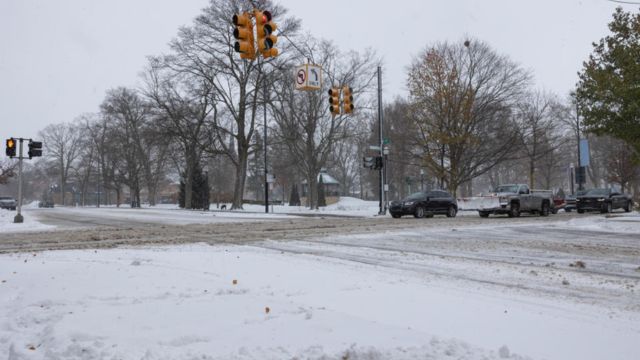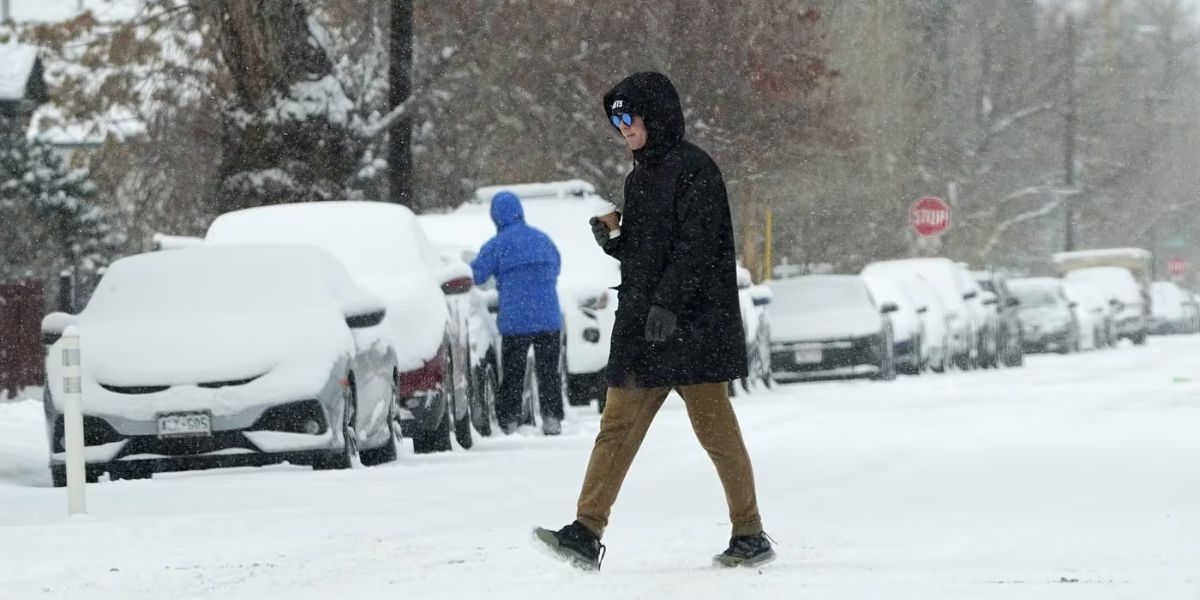DENVER —
Frosty windshields, reduced visibility, and quickly dying electric vehicle batteries are just a few of the many problems that can arise when driving in subzero weather.
Flash freezing occurrences, in which melting snow re-freezes due to an abrupt drop in temperature, can also create icy conditions that can be dangerous for drivers. As a result, black ice can form, which is a serious threat to even the most seasoned winter drivers.
Ways to detect black ice
The translucence of ice makes the term “black ice” misleading, says the United States Forest Service. Unfortunately, black ice doesn’t break up into visible bubbles as it formed, so it’s easy to miss because it disappears into the road.
One way to stay safe on black ice, according to the US Forest Service, is to know when it’s going to be. Low temperatures, which are most common during the night and early morning, are ideal for the formation of black ice. Since temperatures can drop into the negative hundreds or even the teens at night, it’s wise to exercise extreme caution.

Although black ice is almost impossible to see, the Forest Service has stated that it can be detected in certain lights. According to the Forest Service, it could be noticeable on a road that is not frozen because of its glossy appearance and smooth surface.
The United States Forest Service warned drivers that they might be driving on black ice if they noticed a patch of sparkly pavement ahead of them on a mostly black road.
Of course, if you see an automobile in front of you abruptly and without apparent reason, be cautious of black ice.
I feel like I’ve reached a critical point; what should I do next?
Being calm and not responding too hastily is key when driving in any kind of weather.
Typically, the patch of black ice is less than 20 feet in width, so the Forest Service recommends easing off the gas and letting your automobile pass over it.
Attempt to maintain a straight line with the steering wheel and do not apply the brakes. When you detect a swaying sensation in the rear of your vehicle, gently turn the steering wheel in the same direction. According to the US Forest Service, “you run the danger of skidding or spinning out” if you attempt to go against the current by steering in the opposite way.
Also, if there’s a “lot of skidding” occurring, you can apply the brakes—but only if your car has an ABS or if you can pump the brakes while you skid.
Before other cars can see the patch, flash your lights once the encounter is ended.
When you lose control of your vehicle and end up off the road, the Forestry Service suggests attempting to navigate into an unoccupied area or a “fluffy snowbank.”




